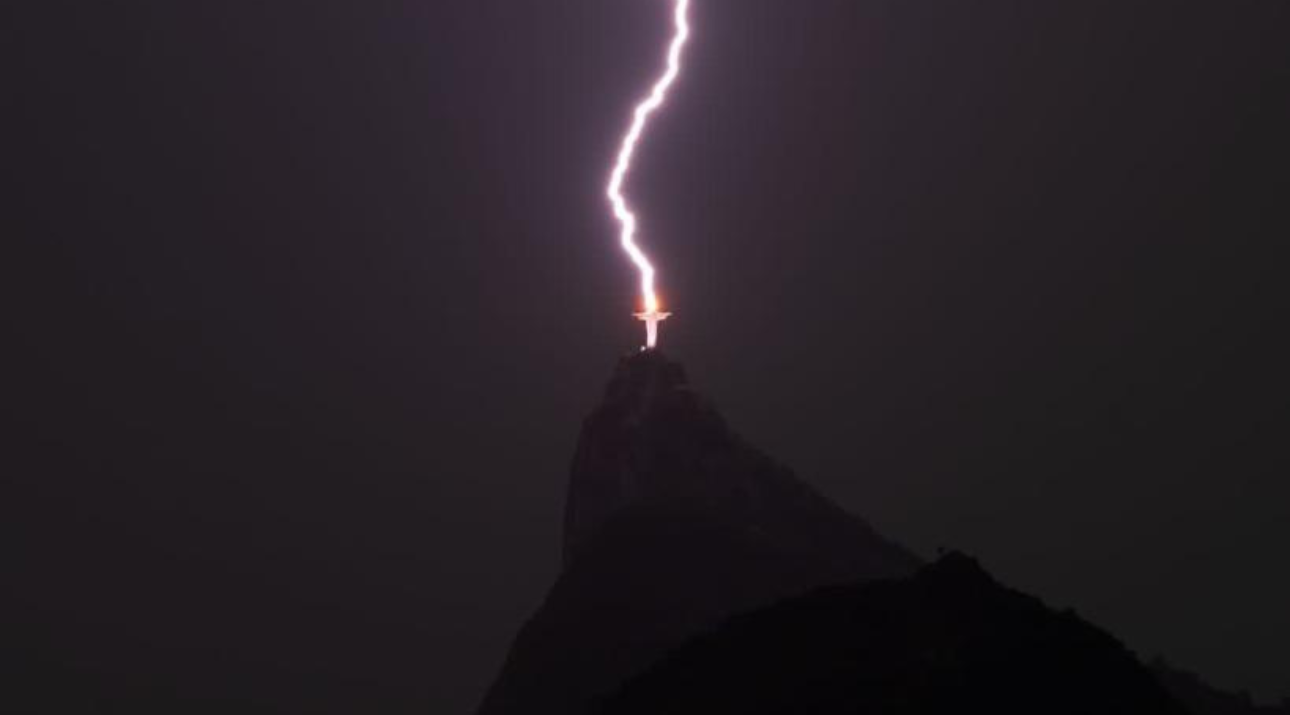Por: Luis Santamaría del Río
(ZENIT News / Rio de Janeiro, 15.02.2023).- On the second weekend of February 2023, storms lashed the city of Rio de Janeiro, with much rain and thunderbolts. The electric discharges struck the monument to Christ the Redeemer several times and caused damages [in the city]. From the first moment, teams of the Christ the Redeemer Archdiocesan Shrine worked to evaluate the possible damages caused.
The entire lighting and Internet system of the Christ the Redeemer Archdiocesan Shrine was out of service, including the lights that illuminate the monument to Christ the Redeemer, and those of the Chapel of Our Lady of Aparecida, which is at the base of the monument. Electric and Electronic equipment, such as computers, were also burnt.
On Sunday morning, February 12, a team, which included climbers, carried out an evaluation to identify damages to the structure of the monument to Christ the Redeemer. The inspection carried out by the team of the company in charge of the conservation, investigation, mapping and restoration of the image, located at the summit of the Morro do Corcovado, Southern Cone — after a recent storm where a strong lightning strike was recorded at the head of the monument –, verified that there was no damage done to the monument The work carried out by the Cono Sul company deals mainly with the removal of agents that could put the monument and its visitors in danger.
Diagnosed in 2015 was that the system of protection against lightning (SPDA) installed in Christ the Redeemer didn’t guarantee its integrity, representing a serious risk to the structure. The adaptation was carried out in 2021, with the installation of the new crown, which is four times larger than the previous one, the replacement of censors, a new and greater grounding system, which guaranteed its security. The work was done in the “Project 90 Years of Christ the Redeemer — Restoration Emergencies, Preventive Maintenance and Emergency Works, Phase 1,” which took care of some of the emergency works.
“After the fright, the certainty that the daily effort that the Archdiocese and its team make goes in the correct direction, to guarantee the preservation of the integrity of Christ the Redeemer in face of the constant challenges imposed by the weather and the exposure to nature,” pointed out engineer João Racine. “Our greatest symbol, struck by strong electrical discharges, demonstrated its resistance once again. Struck repeatedly by all kinds of bad weather, it continues illuminating the sky, resilient, welcoming and solidary as every Brazilian,” said the Rector of the Christ the Redeemer Archdiocesan Shrine, Father Omar.
“The greater part of the electrical activity that we observe in the atmosphere occurs in clouds known as “storm clouds,” which are very common in the summer afternoons of Rio de Janeiro. In general, the places with the highest incidence of lightning depend on many factors, among them the altitude and, because it is located at a great height in the city of Rio de Janeiro, the monument to Christ the Redeemer is a propitious place for the incidence of these electrical discharges. Both the storm of Friday, February 10, as well as the summer storms, monitored up to now, show little difference from one year to another. It’s not possible to affirm an increase or diminution of the incidence of lightning, both in the region of Christ the Redeemer as well as in the city of Rio de Janeiro,” said meteorologist Anselmo Pontes of the Rio Alert system of monitoring and alert of rains and landslides in the city of Rio de Janeiro.



